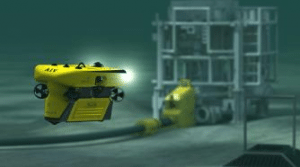 Subsea 7 announced today announced that it has completed the design and build of the first commercially available Autonomous Inspection Vehicle (AIV), a technology intended for remote inspection and intervention of subsea structures such as manifolds, wellheads and risers. Designed in partner ship with the Scottish-based robotics software developer Seebyte, the AIV is the first in an ambitious plan to develop a series of AIV’s, initially capable of general visual inspection, through to fully capable work-class sized intervention vehicles.
Subsea 7 announced today announced that it has completed the design and build of the first commercially available Autonomous Inspection Vehicle (AIV), a technology intended for remote inspection and intervention of subsea structures such as manifolds, wellheads and risers. Designed in partner ship with the Scottish-based robotics software developer Seebyte, the AIV is the first in an ambitious plan to develop a series of AIV’s, initially capable of general visual inspection, through to fully capable work-class sized intervention vehicles.
While autonomous underwater vehicles (AUVs) have been in service for some years, the arrival of the AIV, with its tetherless technology, significantly increases the flexibility and efficiency of the vehicle throughout the life-of-field cycle.
Through the development process many technical challenges surfaced, including changing the shape of the vehicle from the original design concept to optimize the vehicle’s shape with regard to stability and maneuverability, while conserving power.
T he fully autonomous vehicle can operate for a 24-hour period on a single charge of its custom designed lithium-ion batteries, which are housed in pressure vessels within the hull.
he fully autonomous vehicle can operate for a 24-hour period on a single charge of its custom designed lithium-ion batteries, which are housed in pressure vessels within the hull.
The sensor package has been developed to cover the requirements of general visual inspection; it comprises the latest sonar technology coupled with high quality video cameras and low power LED lighting.
A significant software integration and development project has been running in parallel with the hardware development and this too has used the most advanced techniques to manage, debug and control the development.
The concept, introduced at OTC 2010, had garnered a significant amount of interest from operators in the offshore industry and this year, Subsea 7 is using the OTC conference as a platform to help customers understand the technology and provide information on the commercialization.
More on Subsea 7’s Autonomous Inspection Vehicle can be found at the Autonomous Undersea Vehicle Applications centers website.

 Join The Club
Join The Club













